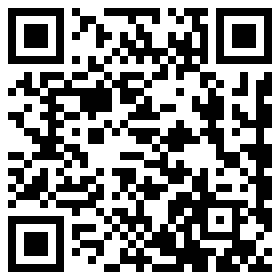Ordinals unlock a new way to record images, text, and anything else on the Bitcoin blockchain – using satoshis, Bitcoin's base units. Here's what they are and how they work.
TL;DR
- Ordinal Theory: Under Ordinal Theory, each individual satoshi can be ranked, ordered, inscribed, and individually transferred.
- Inscriptions: Individual satoshis can be inscribed with unique, immutable data that is stored completely on the blockchain, rather than on external servers such as IPFS, as most other NFT data is stored.
- Rarity: Satoshis do not need to be inscribed to have rarity, as the ranked order of satoshis (e.g. the first satoshi of a block) can assign unique values.
- Secured on Bitcoin: Ordinals are immutably secured on the most time-tested, robust, and decentralized blockchain out there.
What is Ordinal Theory?
Under Ordinal Theory, individual satoshis (for every 1 bitcoin, there exist 100,000,000 satoshis) are kept track of based on the order that they’re mined. Hence, the name Ordinals.
However, to keep track of individual satoshis, you would need an Ordinal compatible wallet that allows you to control the specific order output of your satoshis when creating outgoing transactions. If you send out an Ordinal inscription from a wallet that does not allow individual sat control, your satoshi may be lost to the transaction fee.
Because Ordinal Theory considers each satoshi individually, there is an inherent rarity value built into each satoshi before any inscriptions are even created. Depending on the ordering placement of the mined satoshi (e.g. if a satoshi is the first-mined after a halving cycle), or even the significance of the number (e.g. if the number is a perfect square root), a rarity type is assigned. You can read more about Ordinal Theory from the handbook, where the author breaks down rarity levels and how to recognize them.
How do Ordinal inscriptions work?
You may remember the latest Bitcoin soft fork upgrade near the end of 2021, Taproot. In essence, Taproot brought functionality that enabled large and complex transactions that weren’t feasible before, while laying the groundwork for further developmental potential. This upgrade has made it a bit easier to store inscribed data directly on the Bitcoin blockchain via new Taproot spend scripts.
Coupled with Ordinal Theory which effectively assigns serial numbers to each satoshi, we can inscribe and transact these individual units just like we would transact Bitcoin normally. This is because Ordinal inscriptions don’t require a new blockchain, token, or scaling layer to work. As a result, Ordinal inscriptions are completely optional yet simultaneously permissionless.
How do I create an Ordinal inscription?
To create your own Ordinal, you must run a fully synced Bitcoin node and have an Ordinal-compatible wallet (that can create inscriptions and utilize sat control when sending out the inscription). Technically savvy users can follow the Ordinals handbook guide to run such an ord wallet.
If you’re not keen on setting up a full node and running the ord wallet in your terminal, there are a number of no-code services already available, such as the inscription creator from Gamma.
As mentioned above, it is imperative that inscriptions not be sent out from wallets that are not Ordinal-compatible, or that don’t have advanced sat control functionality. Instead, it is recommended that you create a new wallet with an unused Taproot receiving address, so that you can receive and hold your Ordinal inscription and later export your wallet to a user-friendly, Ordinal-compatible wallet.
While there is no marketplace available for transacting Ordinal inscriptions just yet, many have been transferring inscriptions peer-to-peer through the ord wallet.
Why are Bitcoin NFTs suddenly becoming popular?
Since NFTs first caught mainstream attention around 2017 with the Cryptopunks craze, most NFTs to date have been minted and popularized on the Ethereum blockchain. And while Bitcoin doesn’t allow for Ethereum’s level of programmability, NFTs are actually considered to have originated on Bitcoin through the introduction of Colored Coins back in 2012.
Since then, a number of sidechain projects (such as Blockstream’s Liquid) and Bitcoin scaling solutions (like Stacks or RGB) have enabled Bitcoin-secured NFTs in different ways. However, no project has been able to truly create popularized, on-chain Bitcoin NFTs — until now. Since the first Ordinal inscription on December 14, 2022, both the number of ordinals and the fees paid to inscribe them on the blockchain have skyrocketed:


The current process for inscribing satoshis, however, remains complex, technically demanding, and out of reach for many — including those who may be crypto-native. Despite these challenges, Bitcoin NFTs have been on an upwards trend.
Given that Bitcoin is the most robust and long-standing blockchain in existence, perhaps the idea of securing immutable, non-fungible assets on Bitcoin makes the most sense. In comparison to most other blockchains where NFTs are stored on IPFS or Arweave, Ordinal inscriptions are stored directly on the Bitcoin blockchain, making them truly immutable.



All Comments